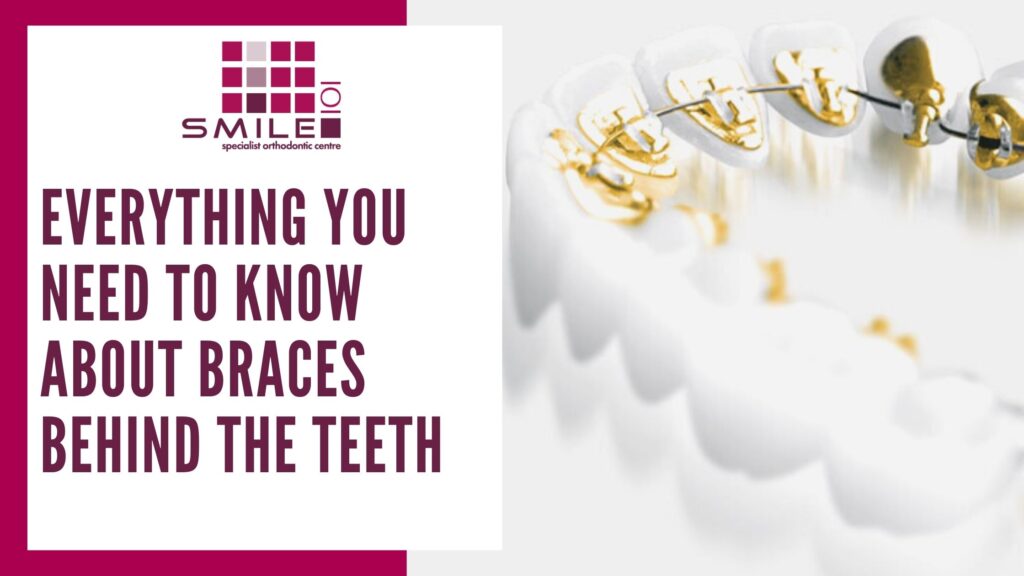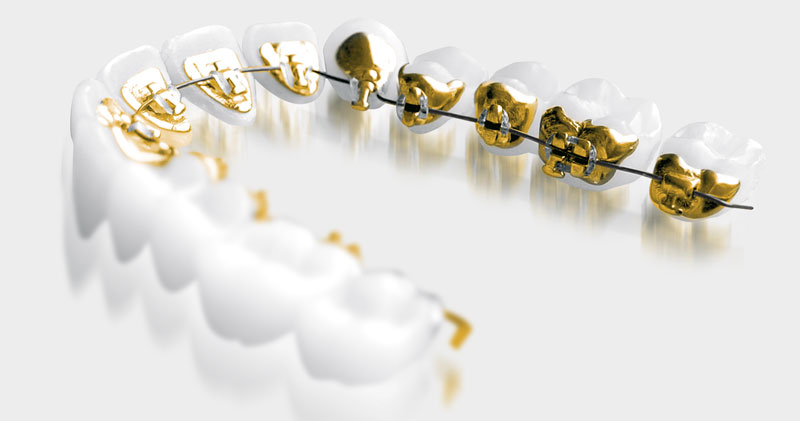Everything You Need To Know About Braces Behind The Teeth

In today’s modern world, wearing conventional metal braces is a complete no. As people are becoming increasingly aware of the importance of their smile and facial aesthetics, they are looking for orthodontic treatment options which can fix their teeth without having to wear those unaesthetic traditional braces.
Despite the obvious drawback of metal braces of being unaesthetic, they are still one of the most efficient options for correcting tooth misalignment – especially for the treatment of complex and complicated cases.
According to an estimate, more than three million US teenagers have braces. Hence, the importance of braces in orthodontic treatment cannot be denied, even with the advent of alternative options like the removable clear aligners. So, what if there was a way you could wear braces, but not on the front surface of your teeth, but at the back? Yes, its possible, thanks to the lingual braces.
What are Lingual Braces?
Lingual braces are similar in design and function to the conventional braces. However, instead of being attached to the front of your teeth where they become conspicuous, the lingual braces are bonded to the teeth’ inner (lingual) surfaces. These braces are named since they are bonded towards the teeth’s side, which faces the tongue.

Like the conventional braces, the lingual braces have slots within them through which an orthodontic wire passes. Your Orthodontist will adjust the tension of this wire so that it gradually moves your teeth towards optimal occlusion and alignment.
Lingual Braces Versus Regular Braces?
While the conventional and lingual braces have a lot in common, they also have a few differences:
- Material – the lingual braces are made from the same material as the conventional braces.
- Conspicuousness – the conventional braces are conspicuous. People can notice easily notice that your wearing braces while you’re talking to them. On the other hand, the lingual braces remain hidden as they are bonded to the lingual tooth surfaces.
- Oral Hygiene Maintenance – since the lingual braces are placed on the teeth’ tongue-facing surfaces, cleaning often becomes an issue. It is difficult to remove food debris from difficult-to-reach areas around the brackets. However, you can use an interdental brush for optimal tooth cleaning.
- Convenience – both the lingual and conventional braces need some time for your mouth to become used to. Initially, you may feel slight discomfort with both types of braces. However, it will go away as your tongue becomes used to it – allowing you to eat and speak without difficulty. A research study showed that patients usually get used to the lingual braces during the first three days of wearing.
Braces Behind The Teeth Cost?
The cost of orthodontic treatment depends on various factors:
- severity of your orthodontic problem
- the type of braces you are using
- patient compliance
Generally, orthodontic treatment with lingual braces costs more than the conventional braces. The higher cost of treatment with lingual orthodontics is that these braces have to custom-made for each individual. Also, the lingual braces require additional lab work for designing and attachment. Your dentist is the best person to suggest whether lingual orthodontics would be a suitable option for you.
Lingual Braces Disadvantages?
Lingual braces have a distinct advantage over the conventional braces of being virtually invisible. However, they also carry certain drawbacks which you must consider before making any decision.
- Difficult Oral Hygiene Maintenance – due to their inward position, tooth cleaning often becomes difficult with lingual braces. This is because the bristles of a toothbrush cannot penetrate the areas around the brackets to clean them. As a result, there are higher chances of developing teeth cavities and periodontal problems with lingual braces compared with the conventional braces.
- Not Suitable for Everyone – placement of the lingual braces requires that your teeth should be long enough, and your mouth should have sufficient space to accommodate the braces when you bite. Therefore, lingual braces are not suitable for every individual.
- The Lisp – despite getting used to the lingual braces, some people tend to have a noticeable lisp caused by the lingual brackets’ interference with the tongue’s movement during speech.
- Treatment Time – the lingual braces tend to take longer to correct tooth misalignment compared to the conventional braces.
Custom Fit Braces?
Unlike the conventional braces which come in different sizes, the lingual braces are custom-made for each patient. This is because each patient has different tooth shapes and sizes, and especially, with the limited space available within the mouth, stock brackets may not be suitable for everyone.
Therefore Orthodontists plan and design a unique set of lingual braces for each individual – so that the brackets do not interfere with the movement of your tongue, while also allowing optimal oral hygiene maintenance.
Your Specialist orthodontist will first take an impression your teeth to visualise how your teeth come together and how much space is available to bond the lingual brackets. This information will then be sent to the laboratory for fabrication of the brackets. Finally, your dentist will attach the prepared brackets to your teeth using an adhesive. He or she will then choose a suitable orthodontic wire which initiates the realignment process.
Lingual braces are an excellent option for individuals who avoid metal braces due to conspicuousness but are also looking for something as efficient. If you have been postponing getting your teeth straightened just because you don’t want people to see your metal braces, then you should consider getting lingual braces.
Am I too old for braces?
I am too old to get braces, you might say. Well, think again. According to Harvard Health, one in every five orthodontic patients is an adult. So, you are not alone! No matter how old you are, you can still get your teeth straightened with lingual braces to enjoy a healthy, beautiful and lasting smile.
If you are looking to get your teeth straightened in Guilford, Smile101 can help.
No need to wear the ugly metal braces! Get your teeth straightened without anyone noticing! Our highly qualified team of Specialist orthodontists can give you a rockstar smile with lingual braces. So, what are you waiting for?
Visit our homepage, select the practice you would like to visit and book a free consultation appointment with us, and start the journey towards the smile of your dreams. Let your smile change the world!
